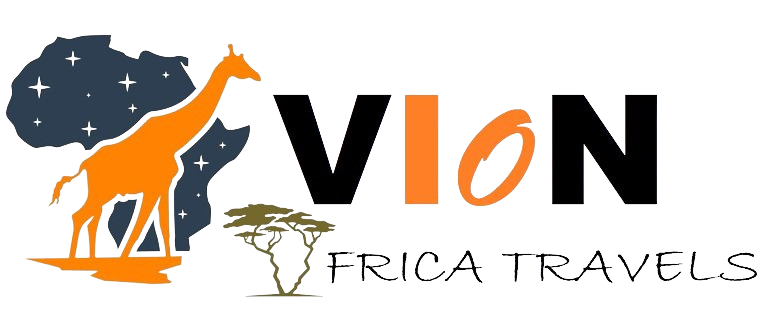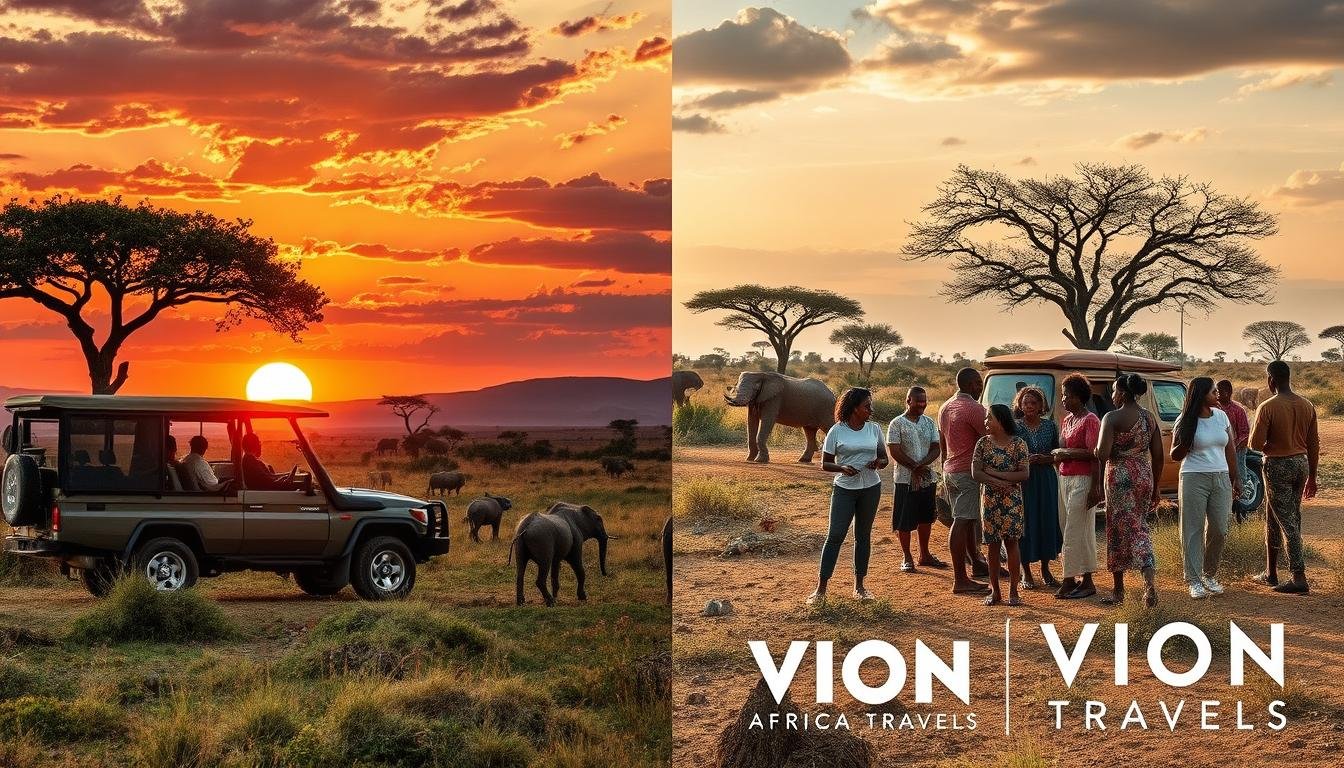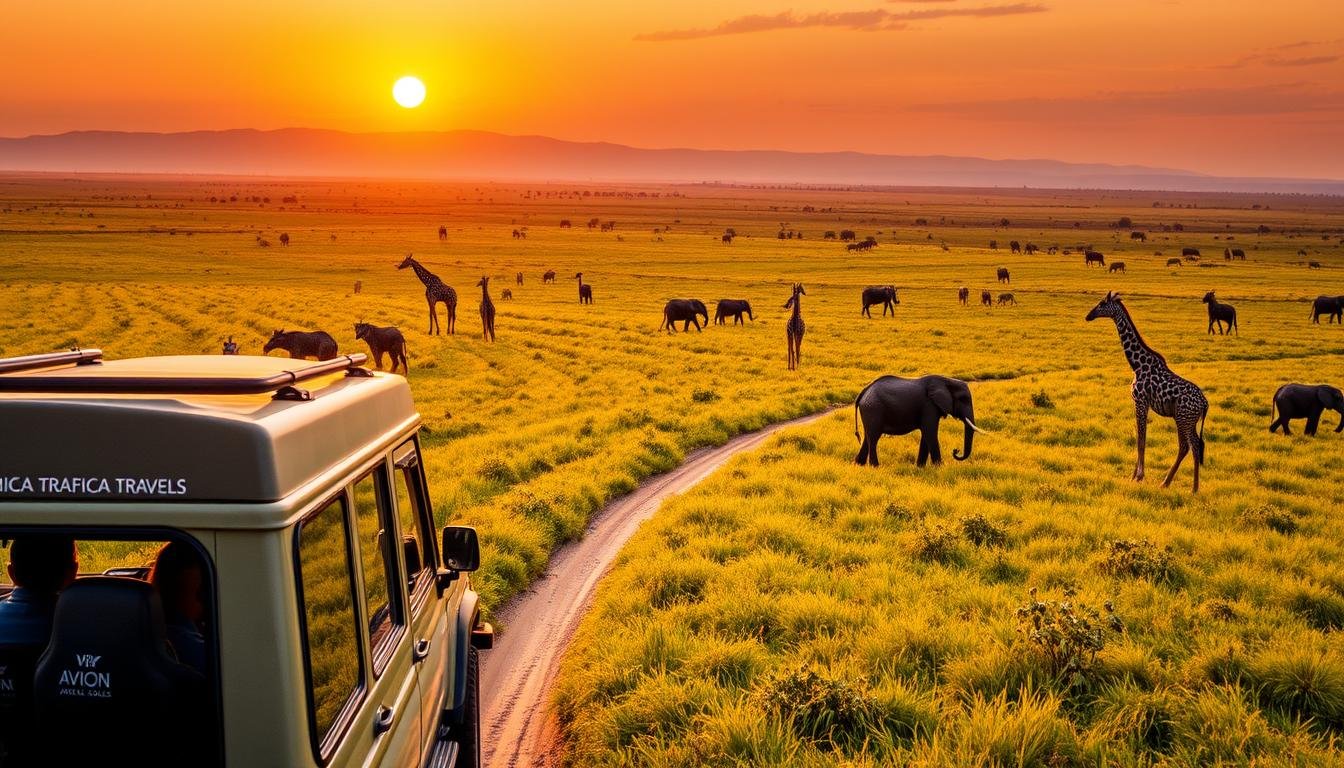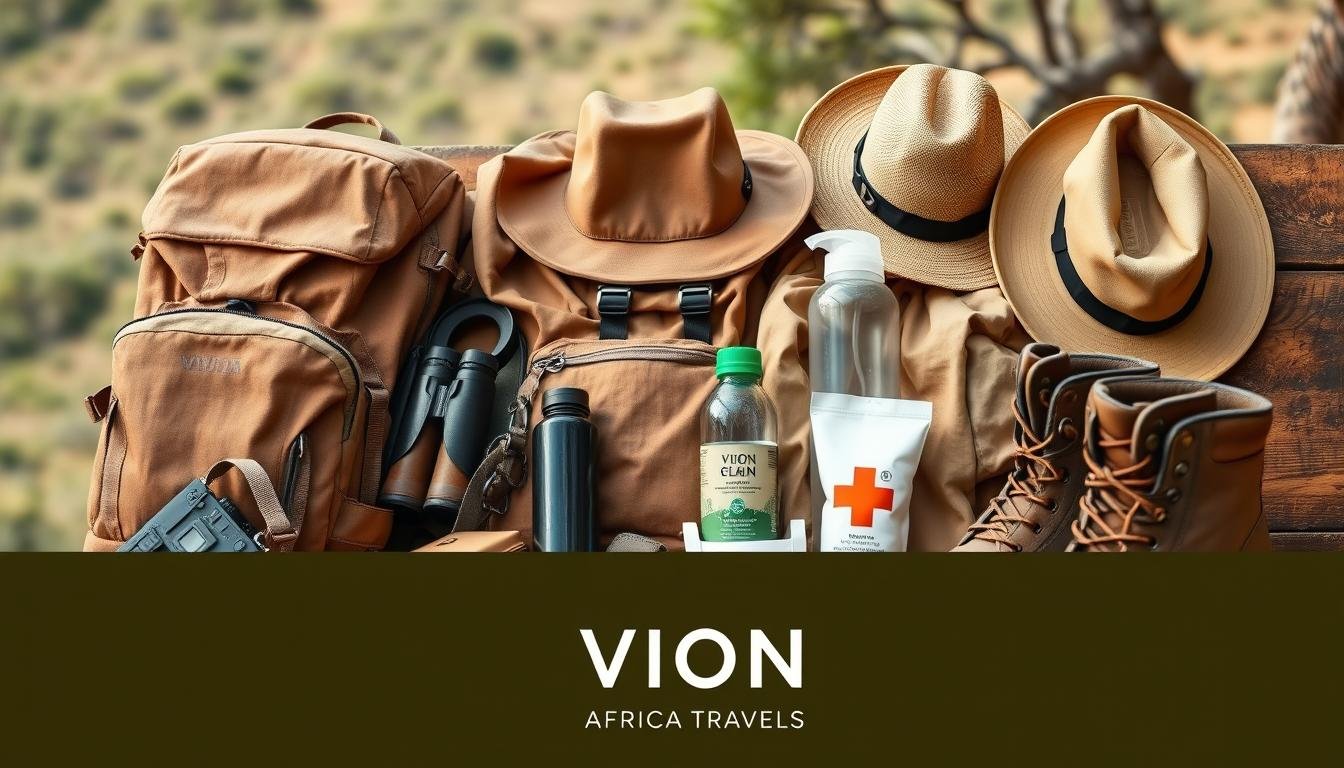10 day african safari cost: Many dream of going on an African safari. It’s a chance to see amazing landscapes and wildlife. As 2024 approaches, people wonder, “How much will a 10-day safari cost?” The cost varies based on several factors.
In this guide, we’ll look at what makes a 10-day safari expensive. We’ll cover accommodation, transport, destination, and season. This will help you plan your wildlife trip and set a budget.
Key Takeaways
- The average cost of a 10-day African safari can range from $3,000 to $10,000 per person, depending on the level of luxury and inclusions.
- Factors like safari destination, accommodation, transportation, and timing can significantly influence the overall cost.
- Researching and understanding the different pricing models for safari packages versus custom tours can help you find the best value for your budget.
- Being flexible with your travel dates and considering off-peak seasons can lead to substantial savings on your safari experience.
- Budgeting for additional expenses like park fees, gear, and optional activities is essential for a seamless and stress-free safari adventure.
Understanding the Basics of Safari Pricing
Planning an African safari adventure means knowing what affects the cost. From how you get there to where you stay, many things influence the price. We’ll explore how to find a safari that fits your budget, whether you want luxury or something more affordable.
What Factors Influence Safari Costs?
The cost of an African safari can change a lot. It depends on things like:
- When you go, whether it’s peak or off-peak season
- How you travel, by air or by land
- Where you stay, from luxury lodges to budget camps
- Any extra activities or trips you want to do
- How long your safari will last
- How many people are in your group
Knowing these factors helps you plan a safari that fits your budget and what you like to do.
Transportation Options: Air and Ground
Choosing how to get to your safari is a big decision. You can fly or take a ground transfer. Air transfers are quicker and more comfortable but cost more. Ground transportation is cheaper and lets you see more of the area, but it takes longer.
Accommodation Types: Luxury vs. Budget
Where you stay also affects the price. Luxury African safaris offer top-notch lodges and camps for a higher price. Budget African safaris use simpler places like hotels or basic camps, but are cheaper.
Thinking about these choices helps you plan a safari that meets your needs and budget. Whether you prefer luxury or something more affordable, there’s a safari for you.
Popular African Safari Destinations
Planning an African safari is exciting, with many top spots to choose from. Kenya, South Africa, and Tanzania are favorites for their amazing wildlife and stunning views. Each place has something special for every traveler, no matter their budget or preferences.
Kenya: The Home of the Big Five
Kenya is a top pick for safaris, known for the “Big Five” – lions, leopards, rhinos, elephants, and buffaloes. The Maasai Mara National Reserve is famous for its wildebeest migration and wide variety of animals. Kenya safari packages range from affordable to luxurious, welcoming all kinds of travelers.
South Africa: Diverse Landscapes and Wildlife
South Africa offers a wide range of safari experiences. From the Kruger National Park to the Garden Route, there’s something for everyone. The Kruger is known for the Big Five, while South Africa’s coast, mountains, and unique ecosystems offer more. Tanzania safari tours in South Africa can be customized to fit your needs and budget, making it a top choice for safaris.
Tanzania: Serengeti and Ngorongoro Crater
Tanzania boasts some of the most famous safari spots, like the Serengeti National Park and the Ngorongoro Crater. The Serengeti is famous for its wildebeest migration, a breathtaking sight. The Ngorongoro Crater, a UNESCO World Heritage Site, is home to diverse wildlife, including the Big Five and rare black rhinos. Tanzania safari tours let visitors get up close to these natural wonders.
Whether you’re interested in Kenya’s wildlife, South Africa’s varied landscapes, or Tanzania’s famous parks, each offers a unique safari adventure. These destinations promise unforgettable experiences that will stay with you forever.
Breakdown of Costs: Safari Package vs. Custom Tours
Planning an african adventure travel offers two main choices: safari packages and custom tours. Knowing the differences helps you choose wisely. This way, you get the most out of your safari pricing for an amazing african wildlife experiences.
What’s Included in a Safari Package?
Safari packages come with a detailed plan. They include:
- Accommodations, from simple lodges to fancy tented camps
- Transport, like shared or private game drives and flights
- Meals, often included in the package
- Guided activities, like wildlife watching and cultural visits
- Park fees and contributions to conservation
These packages aim to make your trip smooth and worry-free. This lets you enjoy the beauty of Africa’s wild.
Custom Tours: Are They Worth the Extra Cost?
Custom tours offer a personalized african adventure travel experience. You work with a travel expert to craft a unique plan. Though safari pricing might be higher, the benefits are worth it:
- Custom Experiences: Your trip can include activities and places you love, within your budget.
- Flexibility: Custom tours let you choose when to go, how long to stay, and how fast to travel. This way, you can dive deep into african wildlife experiences.
- Personalized Service: You get the full attention of a travel expert. They offer tips and advice to make your safari better.
Choosing between a safari package and a custom tour depends on your preferences, budget, and how personalized you want your trip. By considering the pros and cons, you can pick the best option for an unforgettable african adventure travel journey.
Accommodation Options: Budget, Mid-Range, and Luxury
Planning your African safari adventure means thinking about where you’ll stay. You can choose from simple camping to fancy lodges. There’s something for every budget and taste.
Lodges vs. Tented Camps: What’s the Difference?
Tented camps are great for those on a budget-friendly African adventure travel trip. They offer cozy canvas tents with basic comforts like beds and bathrooms. On the other hand, luxury African safaris feature fancy lodges with more amenities like pools and gourmet meals.
Unique Stays: Glamping in the Wilderness
Glamping offers a luxurious and indulgent safari experience. It combines the wild beauty of nature with the comforts of a resort. Glamping sites have large tents or suites with modern features and private pools, right in the African wilderness.
“The ultimate safari experience is not just about the wildlife, but the immersion in the natural world and the unique accommodations that allow you to fully embrace it.”
Choosing between a budget African safari, a mid-range option, or a luxury African safari affects your trip’s feel and cost. Knowing the differences between lodges, tented camps, and glamping helps you pick the right fit for your travel style and budget.
Meals and Dining Costs on Safari
Going on an African safari means thinking about meal costs. You’ll find everything from all-inclusive deals to local food adventures. Knowing what’s available and how much it costs helps you budget for your trip.
Inclusive Meal Plans: What to Expect
Many safari trips include meals in the price. You’ll get breakfast, lunch, and dinner. The food can be a mix of local and international dishes.
Dining Out: Local Cuisine and Costs
Trying local food is a big part of the safari experience. You can find everything from street food to fancy restaurants. Prices vary, but a meal at a local spot usually costs between $10 and $25.
| Meal Type | Estimated Cost (per person) |
|---|---|
| All-Inclusive Breakfast | $5 – $15 |
| All-Inclusive Lunch | $10 – $20 |
| All-Inclusive Dinner | $15 – $30 |
| Local Restaurant Meal | $10 – $25 |
Keep in mind, these are just rough guesses. Actual prices can change based on where you are, your accommodation, and what you like to eat. Mixing inclusive meals with local dining lets you enjoy Africa’s flavors while staying within your safari pricing budget.
Cost of Transportation Within Safari Locations
When planning an [african wildlife tours], think about the cost of getting around. This includes renting vehicles and booking flights. These costs can add up and affect your [safari pricing]. Let’s look at the different ways to get around and their prices to help you budget for your [african adventure travel].
Wildlife Viewing Vehicles: Shared vs. Private
Game drive vehicles are key for seeing wildlife. You can choose between shared or private vehicles. Shared vehicles are cheaper but might not offer as much flexibility. Private vehicles are more expensive but let you go at your own pace.
Internal Flights: When are They Necessary?
Internal flights might be needed if your [african wildlife tours] covers a lot of ground. They can be pricey but save time and reduce travel fatigue. Whether to fly depends on the distance, road conditions, and how remote the places are.
Knowing the costs of getting around your [african adventure travel] spots helps with planning. Choosing the right mix of shared and private vehicles and flights can make your safari better while keeping costs down.
Park Fees and Conservation Costs
When you go on an african wildlife experiences, knowing the fees is key. These costs help fund wildlife preservation and conservation. They are important for the best safari destinations.
Understanding Entrance Fees
Every African country has its own entrance fees for national parks. These fees vary a lot, depending on where you go and the safari type. They are usually per person, per day, and can cost from $10 to over $100. Knowing these costs helps plan your budget better.
Conservation Contributions and Their Impact
Many safari operators and conservation groups let you help wildlife preservation. These fees, often part of the safari package, support important projects. They help with anti-poaching, habitat restoration, and community programs. This way, visitors directly help protect the african wildlife experiences they see.
The effect of these contributions is huge. The money helps keep Africa’s ecosystems balanced and ensures the best safari destinations stay viable. By understanding and paying these fees, travelers know they’re making a real difference.
Timing Your Safari: Peak vs. Off-Peak Seasons
Planning your 10 day african safari cost means picking the right time to go. The safari pricing changes with the seasons. This is because more people want to go during certain times, affecting prices.
How Seasonality Affects Prices
The dry months are the peak time for best safari destinations in Africa. This is when wildlife is easiest to see. But, it’s also the busiest time, making safari pricing higher.
The rainy months, or off-peak season, are cheaper. They offer a chance to see wildlife in different ways and save money.
Best Times to Book for Savings
- Book your 10 day african safari cost in the off-peak season for the best deals. This is usually from November to May.
- If you can, avoid the peak season (June to October). Prices are highest then.
- Booking early can save you money. It also helps you get the best spots.
Knowing how seasons affect safari pricing helps you save. You can enjoy more of the amazing wildlife and views of Africa without breaking the bank.
Essential Gear and Packing Costs
Getting ready for an african adventure travel is more than just booking your safari. Having the right gear is key to a great experience and safari pricing. We’ll look at the gear you need and how much it costs for your African safari.
Recommended Gear for a Safari
Comfort and function are crucial for an African safari. Here’s what you should pack:
- Durable, lightweight clothing in neutral colors (khaki, olive, beige) to blend in with the natural environment
- Comfortable walking shoes or boots with good traction
- Sun protection such as hats, sunglasses, and high-SPF sunscreen
- Binoculars for spotting wildlife from a distance
- Camera and extra batteries or chargers
- Portable power bank to keep your devices charged
- Insect repellent to ward off mosquitoes and other bugs
- Reusable water bottle to stay hydrated throughout the day
Budgeting for Additional Gear
While basic items are affordable, some gear can improve your safari. Here’s a cost guide:
| Item | Estimated Cost (USD) |
|---|---|
| Lightweight, breathable safari clothing (shirt, pants, jacket) | $50 – $150 per item |
| Sturdy, water-resistant hiking boots | $80 – $300 |
| High-quality binoculars | $100 – $500 |
| Professional camera equipment (DSLR, lenses, tripod) | $500 – $2,000+ |
Consider renting or borrowing some items. This can save money, especially for camera gear.
Travel Insurance: Is It Necessary?
Planning an african adventure travel means thinking about travel insurance. It might seem like extra money, but it’s worth it. A good travel insurance policy can protect you and give you peace of mind on your safari pricing trip.
Types of Coverage for Safari Travel
For safari travel, there are key coverages in a travel insurance policy:
- Medical emergency coverage: This helps with unexpected medical costs, like hospital stays and dental emergencies.
- Trip cancellation and interruption: It can refund non-refundable costs if you have to cancel or shorten your trip.
- Lost or stolen luggage: Travel insurance can help replace lost or stolen items, especially when you’re moving around a lot.
- Adventure sports coverage: Make sure your policy covers activities like walking safaris and hot air balloon rides.
Average Cost of Travel Insurance
The cost of travel insurance for an african adventure travel varies. It’s usually 4% to 8% of your trip’s total cost. Costs depend on trip length, age, activities, and coverage level. Despite the cost, the protection and peace of mind it offers are priceless on your safari pricing adventure.
Optional Activities and Excursions
Embarking on an african adventure travel means more than just a safari. Many safari operators offer optional activities and excursions. These can make your african wildlife experiences even more special. Let’s look at two popular add-ons that can enhance your safari.
Walking Safaris: Immerse Yourself in the Wild
Walking safaris offer a unique way to connect with the African bush. Led by guides, you explore the wilderness on foot. This allows a deeper connection with the safari pricing and its creatures.
You’ll see wildlife up close, like grazing antelope and curious elephants. It’s a chance to appreciate the ecosystem’s balance.
Hot Air Ballooning: A Celestial Safari Experience
Hot air ballooning over the savannas and hills is breathtaking. It’s often seen as a special treat. From above, you see the african wildlife experiences in a new way.
You might see wildebeest migration, the Serengeti’s majesty, or the Ngorongoro Crater’s wonder. The early morning and calm ascent make it unforgettable.
When planning your african adventure travel, think about adding these activities. Whether walking or flying, they offer a deeper connection to Africa’s natural wonders.
Currency Exchange and Local Costs
Planning an African safari means knowing about local currency and managing expenses. It’s important to understand currency exchange and budget for small costs. With the right tips, your safari can be both affordable and enjoyable.
Understanding Currency in African Countries
Different African countries use different currencies. For example, Kenya uses the Kenyan Shilling (KES), and South Africa uses the South African Rand (ZAR). Knowing the exchange rates and local currency before you go helps avoid surprises and makes budgeting easier.
Tips for Managing Travel Expenses
- Check the current exchange rates and plan your budget. Use a currency conversion app or website to keep up with rates.
- Tell your bank and credit card providers about your trip to avoid card issues abroad.
- Carry both local currency and debit/credit cards for different payment options. This can save you from high ATM fees or exchange charges.
- Find out where ATMs and currency exchange services are at your safari spots. This ensures you have cash when needed.
- Remember tipping customs and guidelines. Tipping is often expected for services during your safari.
Knowing the local currency and using smart money management lets you enjoy the safari’s beauty and experiences. You won’t have to worry about unexpected money problems.
| Country | Currency | Exchange Rate (USD) |
|---|---|---|
| Kenya | Kenyan Shilling (KES) | 1 USD = 120 KES |
| South Africa | South African Rand (ZAR) | 1 USD = 15 ZAR |
| Tanzania | Tanzanian Shilling (TZS) | 1 USD = 2,300 TZS |
Dealing with safari pricing and managing expenses for African adventure travel can be tough. But with the right strategies and information, you can have a smooth and affordable safari experience.
Planning Your Safari: DIY vs. Tour Operators
Planning your African safari can be done in two ways: DIY or through a tour operator. Each method has its own benefits and drawbacks to think about.
Weighing the Pros and Cons of Each Approach
Going the DIY route might save you money. You can plan your trip and talk directly to service providers. But, it takes a lot of research and planning to make it smooth.
Booking with a tour operator might cost more. Yet, it makes planning easier. You get the help of experienced professionals.
Recommendations for Reputable Tour Operators
If you choose a tour operator, pick a reliable one. Look for companies that offer kenya safari packages, tanzania safari tours, or african adventure travel. They should have good reviews and focus on sustainable tourism.
| Tour Operator | Specialty | Average Cost per Person |
|---|---|---|
| Acacia Africa | East and Southern Africa safaris | $3,500 – $5,000 |
| Wilderness Safaris | Luxury safaris in Southern Africa | $5,000 – $10,000 |
| Exodus Travels | Small group adventures in East and Southern Africa | $2,500 – $4,500 |
By considering the pros and cons and choosing a good tour operator, you can have a great African safari adventure.
Hidden Costs to Consider
Planning an African safari is thrilling, but knowing hidden costs is key. As you plan your safari pricing and african adventure travel budget, remember these extra expenses. This way, you can avoid any surprises.
Tips to Avoid Surprise Expenses
- Include visa fees in your budget. These can cost $50 to $200 or more per person.
- Plan for the cost of necessary vaccinations and medications. This can add hundreds to your budget.
- Make sure to budget for mandatory travel insurance. It’s often required for safari bookings.
- Remember to include airport taxes and departure fees. These can be as high as $50 per person.
Gratuities and Tipping Guidelines
Tipping is common on African safaris. It’s important to know the right amounts. Here’s a basic guide:
- Tip your safari guide and driver $10-$20 per person per day.
- Set aside $5-$10 per person per day for camp staff and other support.
- Be ready to tip restaurant servers, porters, and other service providers you meet.
By planning for these hidden costs, you can have a smooth and enjoyable safari pricing experience. Your unforgettable african adventure travel awaits.
Final Thoughts on Budgeting for Your Safari Adventure
Starting your 10-day African safari means having a budget that’s both realistic and exciting. It’s all about balancing costs with the amazing experiences you’ll have. Planning well and knowing what affects prices are key to a great safari.
Creating a Realistic Safari Budget
Start your budget by thinking about the basics: transport, where you’ll stay, food, park fees, and extra activities. By choosing what’s most important to you, you can make a budget that fits your travel dreams and budget. Keep in mind, things can change, so being flexible is important.
Why Planning Ahead Leads to Better Savings
Planning early can save you a lot on your safari. Booking early lets you get discounts, better deals on flights and hotels, and avoid price jumps later. It also helps you compare tour operators, finding the best value without losing quality.



